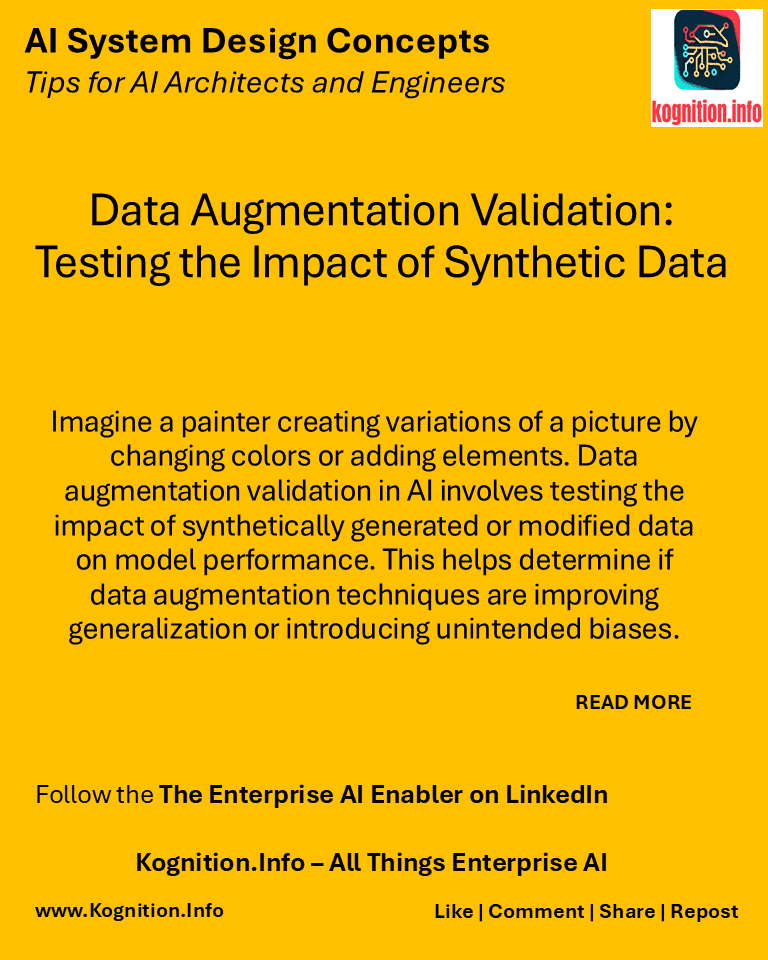
Imagine a painter creating variations of a picture by changing colors or adding elements. Data augmentation validation in AI involves testing the impact of synthetically generated or modified data on model performance. This helps determine if data augmentation techniques are improving generalization or introducing unintended biases.
Use cases:
- Evaluating image augmentation: Testing the effect of image transformations (e.g., rotation, cropping, flipping) on image recognition models.
- Assessing text augmentation: Evaluating the impact of techniques like synonym replacement or back-translation on natural language processing models.
- Validating synthetic data generation: Testing the effectiveness of synthetic data generation methods in improving model performance.
How?
- Generate augmented data: Apply data augmentation techniques to your training data.
- Train models with and without augmentation: Train separate models using the original data and the augmented data.
- Evaluate performance: Compare the performance of the models on a held-out test set.
- Analyze the impact: Determine if data augmentation improves generalization, accuracy, or robustness.
Benefits:
- Improved generalization: Data augmentation can help models generalize better to unseen data.
- Increased data diversity: Augmentation can increase the diversity of training data, especially when data is limited.
- Enhanced model robustness: Augmentation can make models more robust to variations in input data.
Potential pitfalls:
- Overfitting to augmented data: Augmentation can sometimes lead to overfitting if not done carefully.
- Introducing bias: Augmentation techniques can introduce unintended biases into the data.
- Computational cost: Generating and processing augmented data can increase computational costs.
